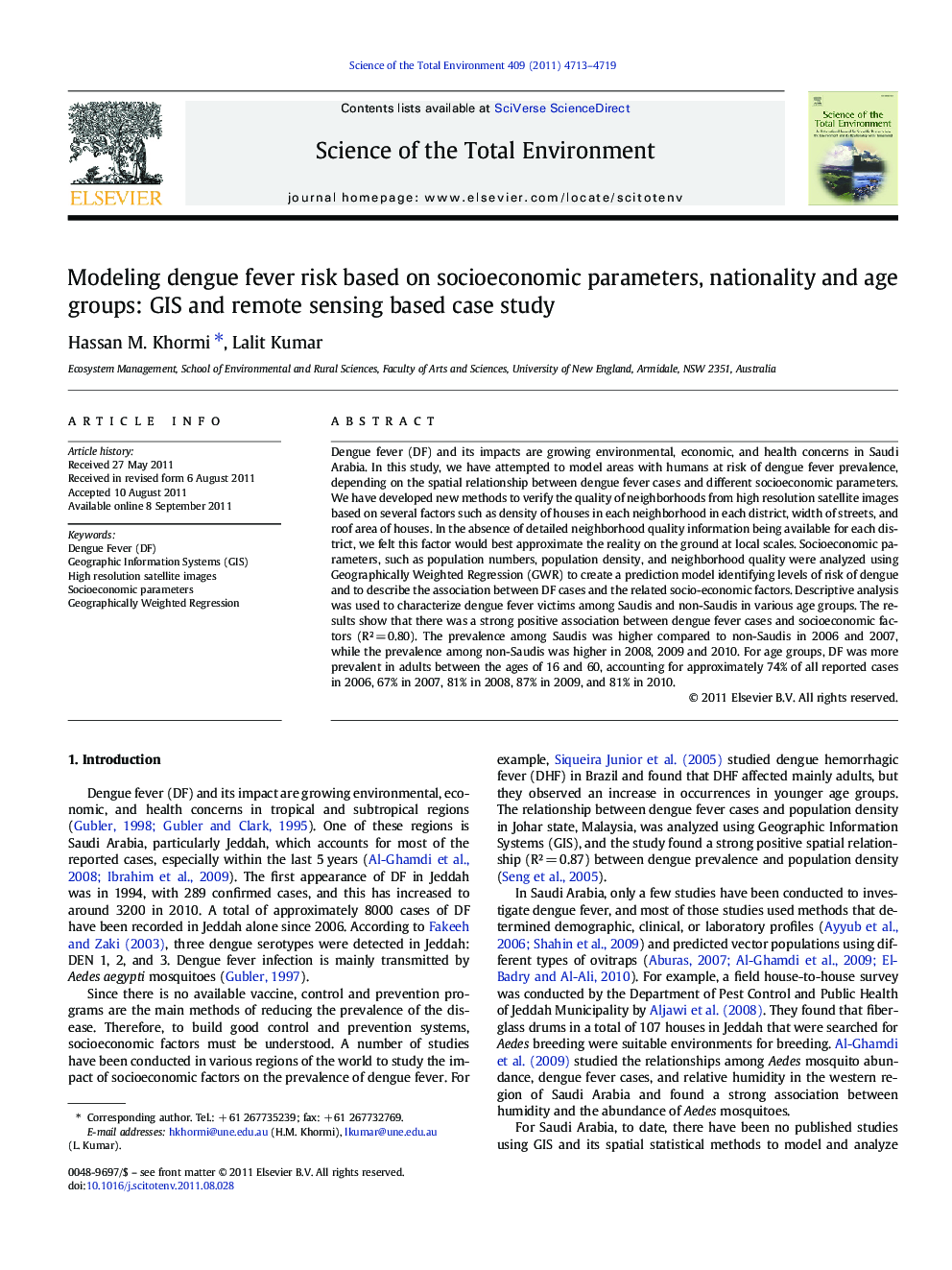| Article ID | Journal | Published Year | Pages | File Type |
|---|---|---|---|---|
| 4429959 | Science of The Total Environment | 2011 | 7 Pages |
Dengue fever (DF) and its impacts are growing environmental, economic, and health concerns in Saudi Arabia. In this study, we have attempted to model areas with humans at risk of dengue fever prevalence, depending on the spatial relationship between dengue fever cases and different socioeconomic parameters. We have developed new methods to verify the quality of neighborhoods from high resolution satellite images based on several factors such as density of houses in each neighborhood in each district, width of streets, and roof area of houses. In the absence of detailed neighborhood quality information being available for each district, we felt this factor would best approximate the reality on the ground at local scales. Socioeconomic parameters, such as population numbers, population density, and neighborhood quality were analyzed using Geographically Weighted Regression (GWR) to create a prediction model identifying levels of risk of dengue and to describe the association between DF cases and the related socio-economic factors. Descriptive analysis was used to characterize dengue fever victims among Saudis and non-Saudis in various age groups. The results show that there was a strong positive association between dengue fever cases and socioeconomic factors (R² = 0.80). The prevalence among Saudis was higher compared to non-Saudis in 2006 and 2007, while the prevalence among non-Saudis was higher in 2008, 2009 and 2010. For age groups, DF was more prevalent in adults between the ages of 16 and 60, accounting for approximately 74% of all reported cases in 2006, 67% in 2007, 81% in 2008, 87% in 2009, and 81% in 2010.
► Income, population density, house quality show high correlation (r2 = 0.8) with DF ► Geographically Weighted Regression effective at modeling areas at risk ► DF more prevalent among adults (16 to 45 yrs) due to mobility ► Non-Saudis more at risk of DF compared to Saudis ► Satellite-image can be used to derive socioeconomic factors
